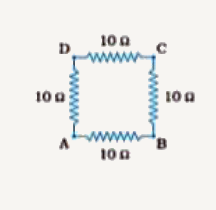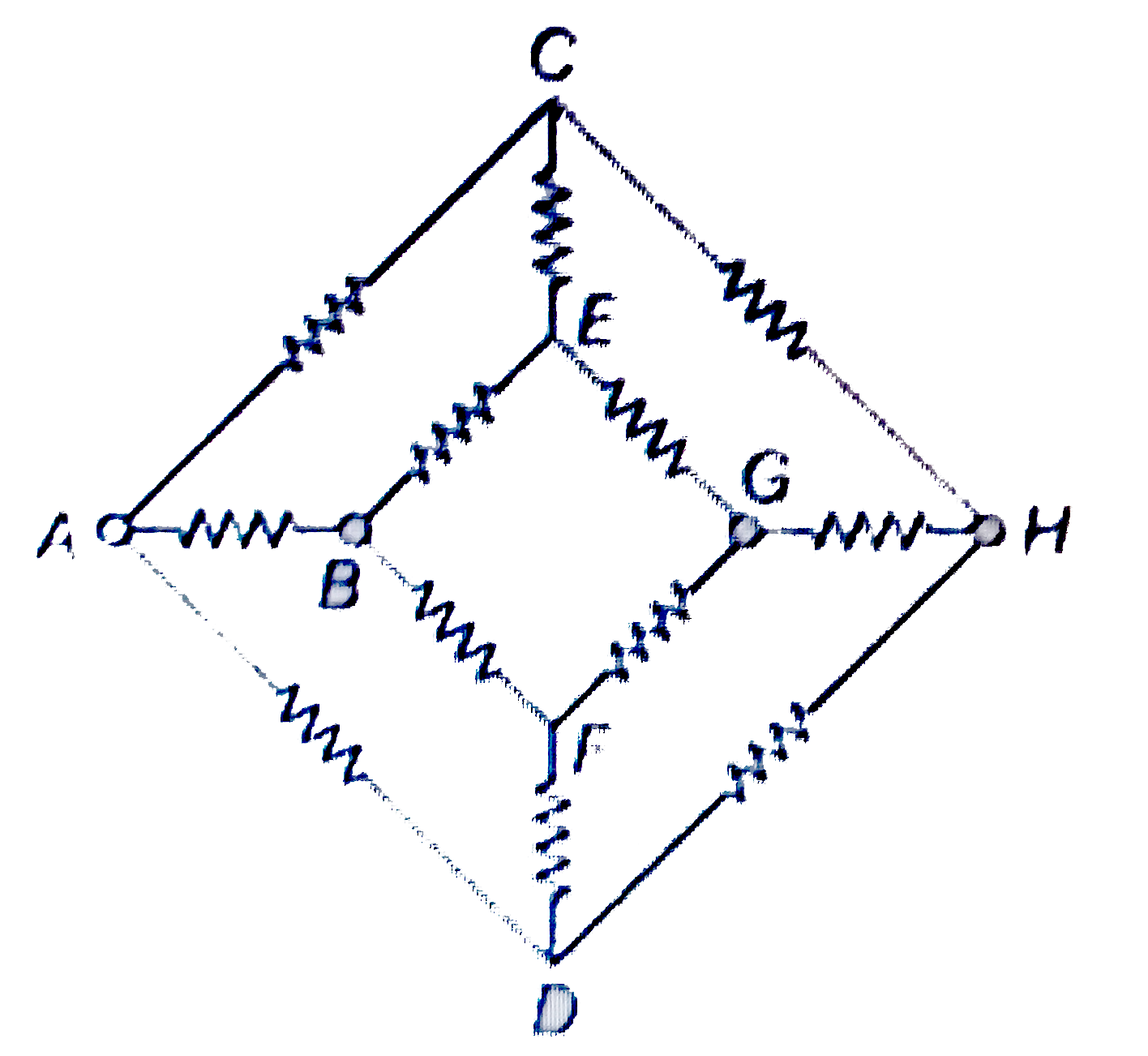Four resistors, each of 10Ω are connected to form a square as shown in the given figure. Find the eqUivalent resistance between the opposite corner A and C and between two points on anyone side (AB).
 Solution in Gujrati
Solution in Gujrati
( i ) Resistance in the path
ADC=10Ω+10Ω=20Ω
Resistance in the path
ABC=10Ω+10Ω=20Ω
Now,1RAC=120+120=110
∴ EqUivalent resistance,
RAC=10Ω
(ii) Resistance in the path ADCB
=10Ω+10Ω+10Ω=30Ω
The resistance of 30Ω is in parallel with AB(=10Ω)
Now, 1RAB=130+110
=1+330=430
∴ EqUivalent resistance,
RAB=304=7.5Ω
Similar Questions
Six resistors of 3 Omega each are connected along the sides of a hexagon and three resistors of 6 Omega each are connected along AC, AD and AE as shown in the figure . The equivalent resistance between A and B is equal to .
View SolutionA uniform wire of 16 Omega resistance is made into the form of a square. Two opposite corners of the square are connected by a wire of resistance 16 Omega . The effective resistance between the other two opposite corners is
View SolutionTwelve resistors each of resistance 1Ω are connected in the circuit shown in figure. Net resistance between point A and H would be

View SolutionFour wires of equal length and of resistance 10Ω each are connected square.
The equivalent resistance between two opposite corners is
View SolutionFour 10 ohm resistors form the sides of a square. The effective resistance between any two adjacent corners of the square in ohms is
View SolutionSix resistors of 3 Omega each are connected along the sides of a hexagon and three resistors of 6 Omega each are connected along AC, AD and AE as shown in the figure . The equivalent resistance between A and B is equal to .
View SolutionFour equal resistors, each of resistance 10 Omega , are connected as shown in the circuit diagram. The equivalent resistance between A and B is
View Solution